How to start a Small Business with BigCommerce?
Nothing is more significant in today’s retail industry than eCommerce. Over the last few years, the industry has grown at a staggering 300 percent, and this trend is expected to continue. While traditional in-store sales remain robust, the rapid growth of eCommerce, especially mobile eCommerce, shows no sign of abating.
You are probably feeling the temptation of building your own small business. However, some may also feel frustrated not knowing how to build one and make it works.
This article will provide you with clear instructions on building your small business from the group up with the help of one of the most popular eCommerce platforms globally, BigCommerce.
Why should you start a small business with BigCommerce?
eCommerce solutions come in various shapes and sizes, ranging from do-it-yourself models to strategic collaborations with market leaders. What works for one brand may not work for another. However, there are specific reasons why we believe that BigCommerce is the right choice for you in starting your own small business.
BigCommerce is the preferred eCommerce site for a number of well-known brands, including Skullcandy and Solo Stove. BigCommerce provides a robust range of resources ranging from marketing to analytics, as well as high-quality design choices and plenty of professional support. It is a popular option for businesses of all sizes, and many small businesses will benefit from the features offered by BigCommerce.
1. Ease of use

Above everything else, a good platform should be simple to use. The more complicated a site is to navigate, the more difficult it will be for you to ensure that no stage in your method is skipped.
BigCommerce is a perfect user-friendly solution for you to choose. With BigCommerce, you can easily create your eCommerce store without having to know how to code.
To get started with BigCommerce, simply create a free account. You can then open your store in a few easy steps: enter your email address and the shop’s name, include some information about your company, and your BigCommerce store will be up and running in minutes.
According to many BigCommerce users, the onboarding process is straightforward and detailed. As part of the process, you will be given a brief tour of where to find specific features and how to customize specific elements. Additionally, BigCommerce invites customers to locate/ask questions in their support’ section during this journey.
2. Price plans, costs, and additional fees

The majority of small companies do not have an infinite budget to invest in a website. That means that the cost of an eCommerce platform would be a significant factor. However, prices alone do not always give the full picture. Certain choices that appear to be relatively inexpensive with extremely low monthly rates may require additional expenses down the road, such as domain names.
With BigCommerce, we suggest that you take advantage of their complete 15-day trial period without providing credit card information to determine whether they are the right merchant solution for your store. It is the only way to determine if it is a good fit for your business and interests.
Many of BigCommerce’s pricing plans provide unlimited bandwidth and accounts. By the way, when you sign up for our free hosting service, we provide you with complimentary hosting and an SSL certificate.
BigCommerce offers four pricing tiers: Standard, Plus, Pro, and Enterprise. Each tier includes basic to advanced features, such as Product Filtering and enhanced API calls.
- Standard - $39/month
- Plus - $105/month
- Pro - $399/month
- Enterprise - depends on the business needs and requirements
BigCommerce’s additional fees come with credit card rate, domain names, themes, apps, and integrations. For further information, please read through our article about BigCommerce pricing plans.
3. Scalability

Most companies have growth objectives, whether they are one year or ten years in the future. Whatever path your company takes, you’ll need help from your eCommerce platform as it expands and evolves. This may include additional space for merchandise, international expansion capabilities, additional payment gateways, or additional image and video content.
Some platforms are built for development, while others place restrictions on what is accessible. If you want to expand or improve your company in the future, choose a provider that will develop alongside you. Otherwise, you risk being pressured to change channels at an inconvenient moment.
Due to the fact that BigCommerce is a fully hosted solution, you are not responsible for technical aspects such as storage, backups, downtime, updates, or security. As your business grows, you’ll need to update your plan; BigCommerce will handle the rest.
BigCommerce custom pricing is unique in that it is directly linked to the success of the company. If you reach a 12-month sales volume, the device will automatically upgrade to a more advanced version. Nonetheless, several retailers upgrade their plan prior to hitting the limit in order to access enhanced functionality. However, if your revenues decrease and the subscription rate is eroding your profit margins, you may always downgrade to a cheaper BigCommerce package.
4. Execution

A site that takes too long to load, is overburdened with graphics, or is dominated by advertisements will immediately turn visitors away, sending sales to your competitors.
Rather than hoping consumers will find you solely on the basis of the quality of your goods, ensure you have an outstanding website that operates in accordance with industry standards. This can include the following:
- Rapid loading of the homepage and subsequent pages
- Adaptability of mobile devices
- Cues for navigation that are easily recognizable
BigCommerce is a one-stop shop. Everything you need to set up an online store is already included, and since all is in one place, getting started is significantly easier. With enough effort, you could get your store up and running in a matter of days or even hours. To begin using BigCommerce, simply sign up, choose a theme, and begin customizing – you’ll see results almost immediately. In addition, all BigCommerce themes are responsive, which means they can run flawlessly in any electronic device, from your computer, laptop, to tablet and smartphone.
5. Features
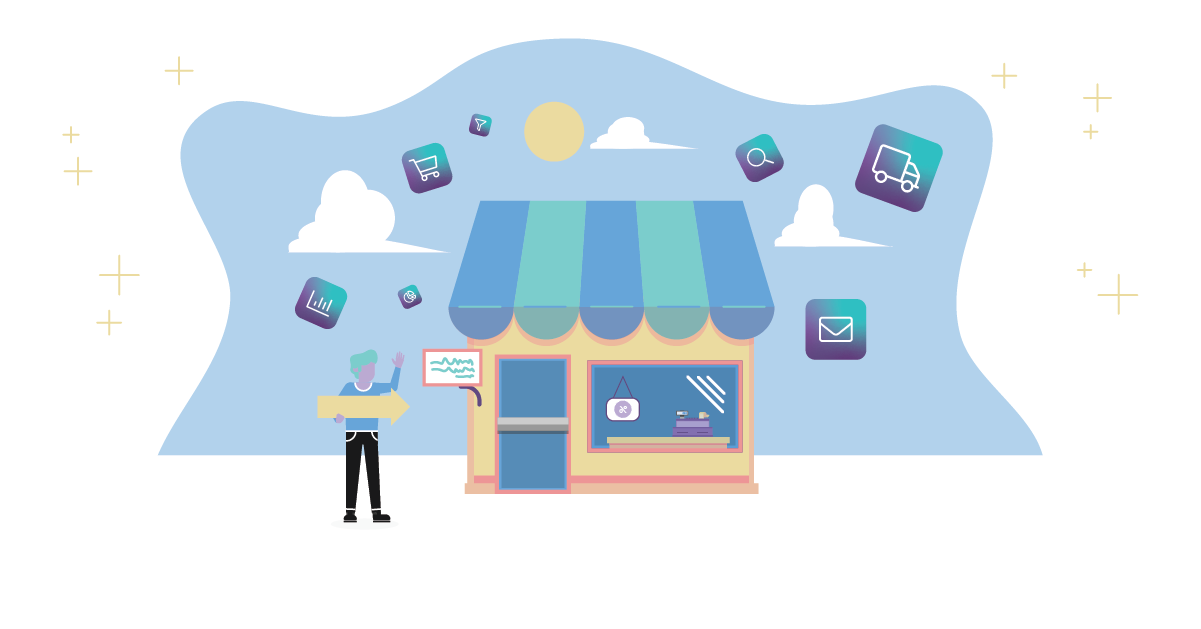
eCommerce success needs far more than just listing the goods for sale. Indeed, the functionality provided by an eCommerce platform can have a significant impact on the results displayed. From easily automated promotions and discounts to robust analytics, the built-in functionality offered by an eCommerce company can factor heavily into the decision-making process.
BigCommerce is a functional powerhouse. There are also plenty of useful built-in features that you’re likely to use everyday. Among the most critical are tracking and reporting analysis tools, omnichannel selling integrations, abandoned carts recovering tools, codes and promotions creating tools, and so on.
6. Marketing tools
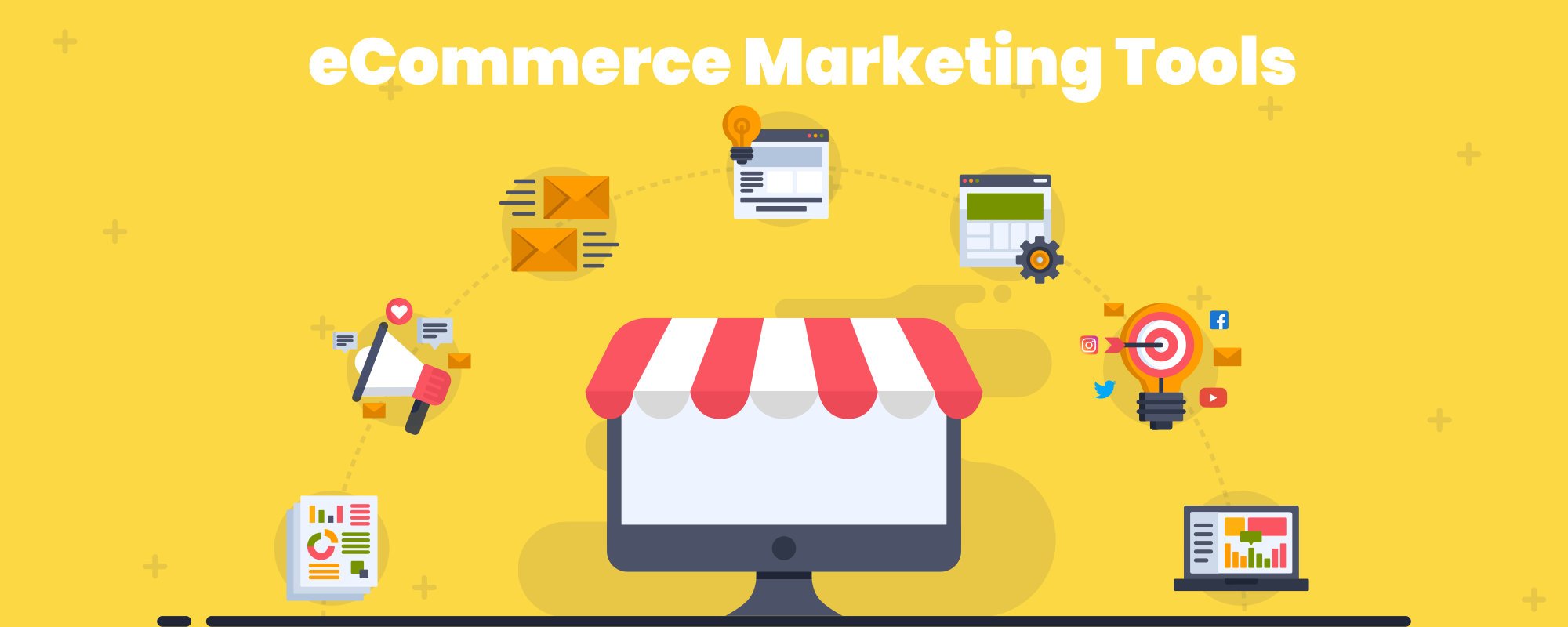
Customers must be aware of your existence in order for you to thrive in the online sales space. Although it is possible to manage customer relationships, coordinate promotions, optimize SEO, and curate email messages using a third party, several eCommerce sites can handle these tasks for you. These types of marketing and SEO tools will help you achieve better results with less effort, saving you time and money.
BigCommerce understands the importance of marketing for stores of all shapes and sizes. It incorporates critical marketing features into all of its plans, including gift cards, coupons, and promotions; Facebook, Instagram, eBay, Amazon integrations; evaluations and product feedback; abandoned cart recovery and Google customer reviews (for all but the cheapest plan).
If you need additional marketing features, you can install one of BigCommerce’s 213 marketing integrations through its marketing app. Mailchimp, Facebook Ads, and Google Shopping are all frequently used platforms.
10 tips for starting a small business with BigCommerce
1. Be who you are, don’t follow the crowd

When you decided to start your own company, you did so to fill a void in the market. Through remaining true to your passion and mission, you will be able to convey to your customers an authentic and organic message.
Tessa Wuertz, Director of Marketing and Partnerships at efelle Creative once said that: “Stay true to who you are. If you’ve seen success, there’s a reason for it, and oftentimes it’s the brand behind a business, so take that into account when you’re making decisions moving forward.” She believes that success comes from authentic self-made brands.
In addition, Tessa Wuertz also stated out that small business owners should consider three key tools when devising a go to market strategy:
- Website: It’s possible to set up a website, where people can learn about your company, and buy from you. As long as you have goods, you need a website to tell your story.
- Feedback from customers: Selling your services, your merchandise, and website, should include soliciting customer reviews on how well you’re doing
- Marketing and email automation: Using email sequences to welcome new customers and to communicate with your current and future customers will strengthen your bond with them. “And with marketing automation, a lot of the work is front-loaded, so it’s continually working for you and your business.”
2. Make your choice wisely

As in your personal life, it’s better to select your battles carefully. Beginning a company and going through pains can be stressful. Concentrate on your most important assets and strategies to ensure that you remain on track for success.
According to Joe Chilson, Head Writer and Account Manager at 1Digital Agency,“if there is one piece of advice that is relevant to any and all small business owners, I’d say that it’s picking your battles.
While you’re still small you don’t have the time, resources, or influence to do everything at once. You need to be careful what you decide to go after, and set achievable goals, especially when it comes to your marketing budget. Each small win will make the next one easier.”
Joe also advises existing companies to take a closer look at the following factors:
- Marketing via email: It generates the most immediate results of any form of digital marketing. You do have satisfied clients. They simply need to be reminded to return on a regular basis.
- Search engine optimization (SEO): It’s much better when your name carries some weight. After establishing some authority for your company, you can pursue larger keywords and rank for them more quickly.
- Consistent web updates: Maintaining a fresh look and feel, both in terms of design and content, will not only increase your Google ranking, but will also assist you in continuously refining your site’s sales funnel.”
3. Be the best at your field
Look at your initial purposes and brand objectives. Your aim should be to strive while doing your best. When you look at what you want to do in the field and ask yourself the right questions, you’ll find answers.
Director of Business Development at 1Digital Agency - Michael Prusich, expressed that it is not necessary to be excellent at everything, just be the best at something.
“From my experience working in small businesses and overseeing business development for small businesses and our clients here at 1Digital, I believe one of the biggest roadblocks that small business owners run into is that they want to solve every problem at once and want to try to do too much at the same time.
Although this is typical of an entrepreneur and a small business owner, I have found that being great at one thing lends itself better to the initial growth and development of a smaller company as opposed to trying to spread yourself too thin.”
4. Focus on your niche
When starting a new business venture, it’s natural to become excited and want to expand into new markets. However, dispersing your efforts too thinly will result in missed opportunities to reach an audience.
Dan Kogan, CEO of 1Digital Agency, discusses the areas in which he believes small business owners should concentrate their efforts as they expand their brand.
_“Stay focused on your niche and constantly:
- Optimize your products and services,
- Focus on organic SEO growth as it drives trust,
- Stay committed to your niche, so that you can stand out of the pact, and
- Reinvest into digital marketing. Sales trumps all.”_
5. Do not underestimate customers’ feedback

Listening to feedback from your customers is crucial as you develop your company. Although it may be tempting to filter out negative feedback, the reality is that both positive and constructive criticism will froster your company to grow.
Jason Boyce is Dazadi’s co-founder and CEO. Jason has learned the ins and outs of developing a company from the ground up during his tenure as CEO of Dazadi. From capital raising to designing and sourcing private label goods globally, to software creation and project management, to digital marketing, and more, he has had tremendous success developing meaningful strategies in the ever-changing world of ecommerce.
Jason’s top tip for small business owners is to emphasize the importance of listening to and communicating with customers. Besides, ensure that you encourage citizens to interact with you. Product reviews are an excellent source of feedback. Additionally, social media and recording customer service contact are ways to communicate and receive feedback.
6. Provide unforgettable experiences for your customers
Consider some of your favorite brands; what about them strengthens your loyalty? The customer journey. A positive customer experience has a domino effect. If done correctly, it will result in an increase in positive brand recognition, traffic, and loyal customers to your online store.
Kaleigh Moore, a freelance writer at kaleighmoore.com, argues that small business owners should prioritize “Create memorable experiences for customers and go the extra mile. That effort still pays dividends.”
7. Be time-efficient

As your company grows, you must learn to manage your time effectively. Consider technology and automation to assist you in accomplishing this.
According to Ailsa Chibnall, owner and web strategist at Border7, “if you don’t value your time, no one else will. Use technology and the power of automation to help you reclaim your day and reinforce your process!”
Numerous resources are available to assist you in this area. Consider your company and the areas where you have holes to determine where you can invest your dollars.
8. Use Omnichannel
Omnichannel strategies are gaining traction, which is unsurprising. From 2020, customers have been shopping in more locations, such as on the ecommerce site, Amazon, Instagram, and the list goes on and on. To ensure that your brand is recognized and provides your consumers with more purchasing choices, begin implementing an omnichannel strategy.
According to Nick Gramatikov, CTO of Digitawise, small business owners will reap numerous benefits from implementing this strategy. “Give customers access to your brand in ways that are convenient for them. Nowadays customers are omnichannel, meaning that they engage with businesses through various channels including different social platforms, text, email, live chat, and others. By providing omnichannel quality support, you show them that you value their business.”
9. Form your squad
Although you may be extremely passionate about your company, you will not succeed if you go it alone.
When Kim Terry, CEO of Subscription Systems LLC, launched her company, she quickly discovered that she needed both human and technological resources to succeed.
When asked for advice for small business owners, Kim said, _“don’t try to do everything yourself! One major key to growing is to learn what to hold on to and know what to trust to others. Too many small business owners I have seen never develop their company, as ‘there are not enough hours in the day’ for them to do everything. Either they burn out or progress slows to accommodate the amount of time they have available.
Use SaaS, Cloud, and Outsourced services as much as possible. These services are already working for you and do not require staff in your company to run them. Hire people who can do effective vendor management instead of do’ers. You will need a lot fewer of them.”_
10. Get used to data analysis

Shane Barker, Founder and CEO of shanebarker.com, emphasizes this point in his own advice to small business owners.
_“Use data analytics to your advantage.
Data is the key to understanding your customers. And by analyzing it, you’ll be able to improve your offerings. This, in turn, will help you grow your business.
Three of my favorite tools are Trello, Slack, and SEMrush. They help with coordination, project management, and website growth.”_
How to start a small business with BigCommerce?
1. Before starting a small business with BigCommerce
Step 1: Choose your Products
Prior to brainstorming the design and experience of an online shop, or even the name of your company, you’ll need to decide which items to sell. This decision constitutes a strategy in and of itself, as the products you sell will influence any other business decision you make, such as branding, website design, marketing, loyalty programs, and shipping.
Whichever industry you work in, there are two types of goods that you can sell:
- Commoditized products
- Niche products
Commoditized products are those that are necessary, in high demand, or common. They may be physical or digital products. Commoditized goods account for the lion’s share of online purchases. Consider something you purchase at Walmart or Amazon that is backed by a major brand — food, golf clubs, clothing, or children’s toys, for example.
Niche products are goods or services that cater to a niche market or product category. These are often one-of-a-kind or handmade products, which makes them some of the most common items purchased online. Oftentimes, niche products are produced in limited batch sizes or on demand. Consider a one-of-a-kind beaded necklace, artisanal frozen yogurt, or leather iPad case.
Many store owners, on the other hand, market a mix of commoditized and niche items in order to boost their profit margins.
But how to decide which products to start your business with? Keep in mind some of our guidances down below:
- Determine or develop products that provide a solution to a problem
- Identify products that you and others are enthusiastic about
- Identify products with potential for branding
- Recognize and serve niche markets
- Look for business opportunities everywhere
- Look for products that satisfy the guilty pleasures
Step 2: Conduct your Market Research

Market research is not only prudent, it is critical for your ecommerce business ideas. Investing time in this phase will assist you in determining whether or not there is a healthy demand for your idea.
There are many different approaches you can use to conduct market research on your small business concept. However, it’s always wise to combine strategies and the latest online business tools to ensure you have an accurate view of your competition and are making the best business decisions possible.
Step 3: Run a Competitive Analysis
Competitive analysis is frequently used to refer to the information you learn from your rivals. It is not simply a matter of conducting a SWOT (Strengths, Weaknesses, Opportunities, and Threats) review or determining who is in the field.
Competitive analysis is critical to your business’s success because it enables you to rapidly detect market trends and respond to rival campaigns or tactics in order to retain a foothold or completely out-compete them. To ensure the sustainability of your online company, you’ll need to conduct a thorough analysis of the current competitive environment.
Step 4: Identify your Target Market

You must first recognize the people who really want or want what you are offering. By targeting, or segmenting these individuals, you can design your store for the right audience, maximizing the use of your resources to impress and attract potential customers.
To begin, create a need for your product or service by focusing on the problem it can solve. Then, by identifying who has already purchased your product or service, you will refine your target market.
This includes demographic information about your target audience, audience type, and any other characteristics associated with your target consumer. If your product or service is brand new, you may want to obtain additional feedback from your rivals.
The most difficult aspect of this method is avoiding assumptions. This is critical for the consistency of your consumer targeting, since an inaccurate assumption would have a direct impact on your conversion rates.
For instance, if you want to start a homemade pet biscuit company, you are likely an expert on the numerous benefits of your products. However, do not believe that customers understand these concepts as well as you do. They may be completely unaware that such a product exists. Although it can be tempting to fill in the gaps, you should communicate with potential clients and do as much research as possible.
As your company expands, it is critical to continue evaluating and staying current on your target market. Your target market is constantly changing. It is constantly changing and taking on new forms. Knowing who you’re aiming for and constantly improving it will keep you on track.
Step 5: Write your Business Plan
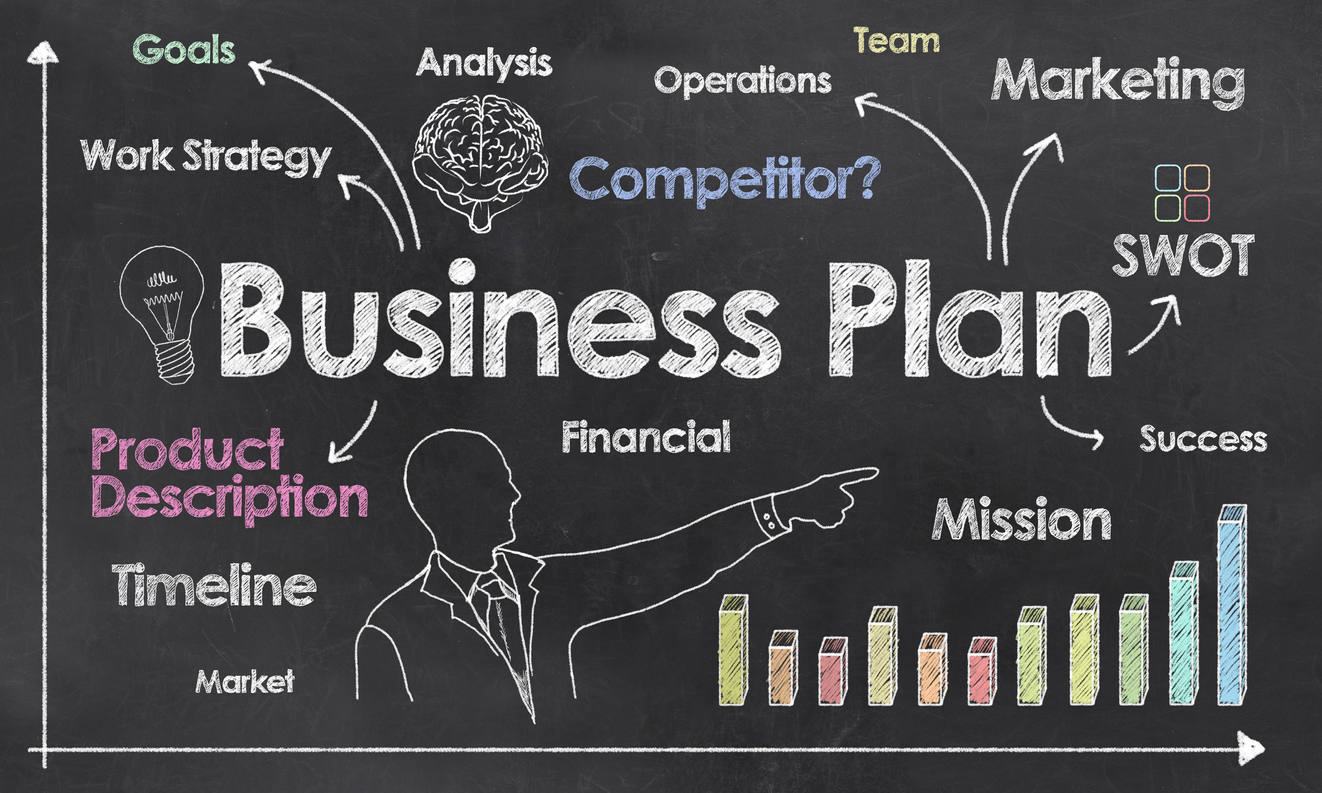
Developing a business strategy is important. Along with identifying the mission and objectives of a company, a jewelry store business plan will assist the organization in gaining the interest of investors as it expands.
The US Small Business Association encourages those just starting an online business to provide details about their history, education, and experience when drafting a proposal. Business plan writers can help you craft a compelling business plan that highlights your strengths and qualifications. Mention the motivations for the new venture and the problem that the online business plans to address, as well as concrete details about how the issue will be resolved.
2. Set up a small business with BigCommerce
After going through all the above steps, you are now faced with the need of having an eCommerce platform to easily manage their website, marketing, sales, and operations. In this part of the article, we would like to provide you with guidance on how to set up your own small business with BigCommerce.
Set up your free-trial BigCommerce store
Your BigCommerce trial store includes access to almost all of BigCommerce’s services for 15 days, including those that are only accessible on some BigCommerce plans. We highly recommend you to take advantage of this opportunity in order to get to know about the platform as well as determine whether this solution fits your business requirements.
Building a trial store
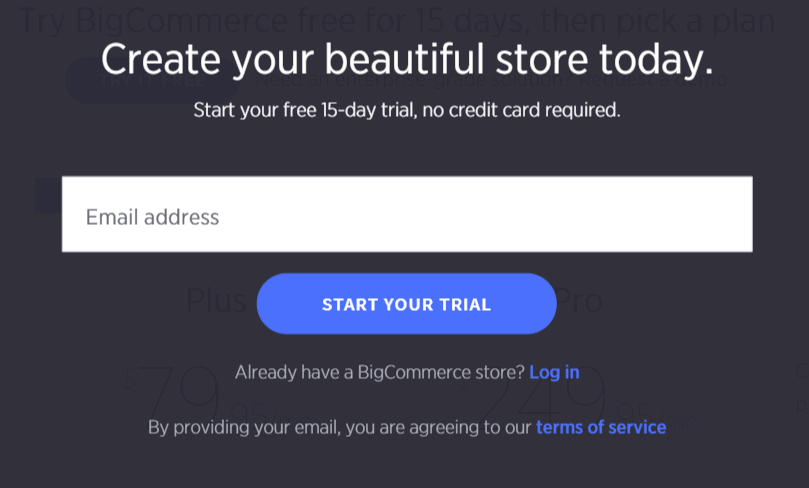
- Go to the BigCommerce homepage, click on Get Started
- Enter your email address, select Continue to Store Details
- Fill the form with all the information required (store name, password, first and last name, phone number, and the size of your business)
- When you’re ready, click on Create Your Store
After you begin your trial, you can change the store name at any time. You can also add a trial to an existing BigCommerce account by entering your current email address and password.
First Login
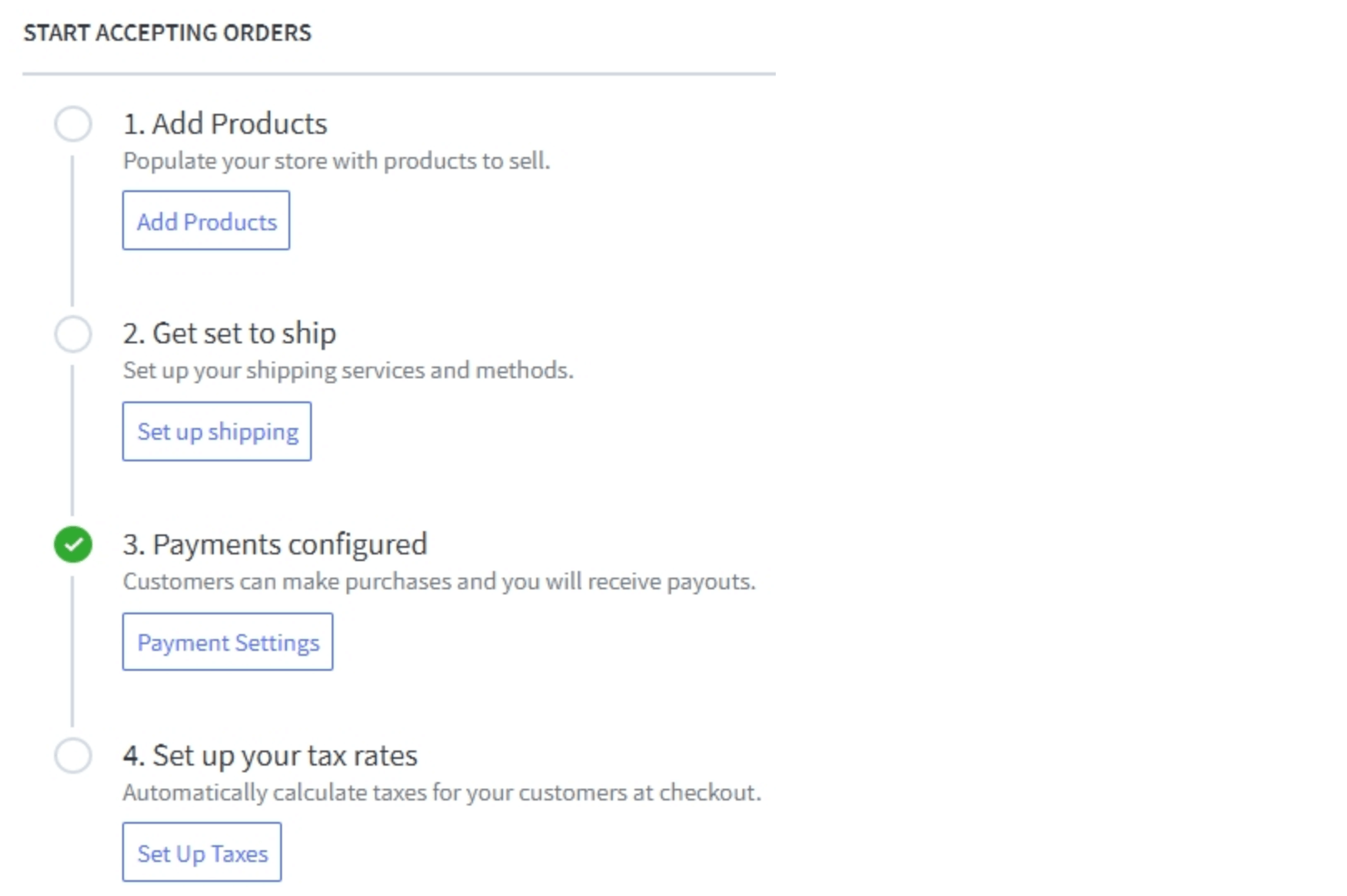
After creating your trial, you’ll be guided to your store’s dashboard. The dashboard will outline the next steps necessary to get your store operational. Start by clicking the buttons underneath each action item or by selecting an item from the left-hand main menu.
When a BigCommerce trial is created, it is not available to the public. This prevents search engines from indexing your store as it is still in progress and prevents users from visiting it prior to launch. The store will not become operational until you navigate to Store Setup then Store Settings and change the status of the store to Open.
For additional tips on preparing your store for launch, read the next part. If you’re more concerned with quickly getting your trial up and running for testing purposes, read the BigCommerce Quickstart Guide.
Attaching trial to you existing account

If you already have a paid store or trial, you can add a new trial directly from the BigCommerce Account Dashboard.
- From inside the control panel, navigate to Account Overview in Account Settings. Take note that the Account Dashboard is only accessible to the store owner
- Click the Add New Store button once you’re in the account dashboard
- Complete the form with information about the current trial store and then select Add New Store
- Your new trial store will be produced in a few seconds. From here, you can access the control panel for the new store or display its data.
Cancelling trial store
No action is required to cancel a trial store. After the 15-day trial duration, the trial will automatically expire. Never would you be charged for a trial shop.
Set up your BigCommerce store
Set up your User permissions
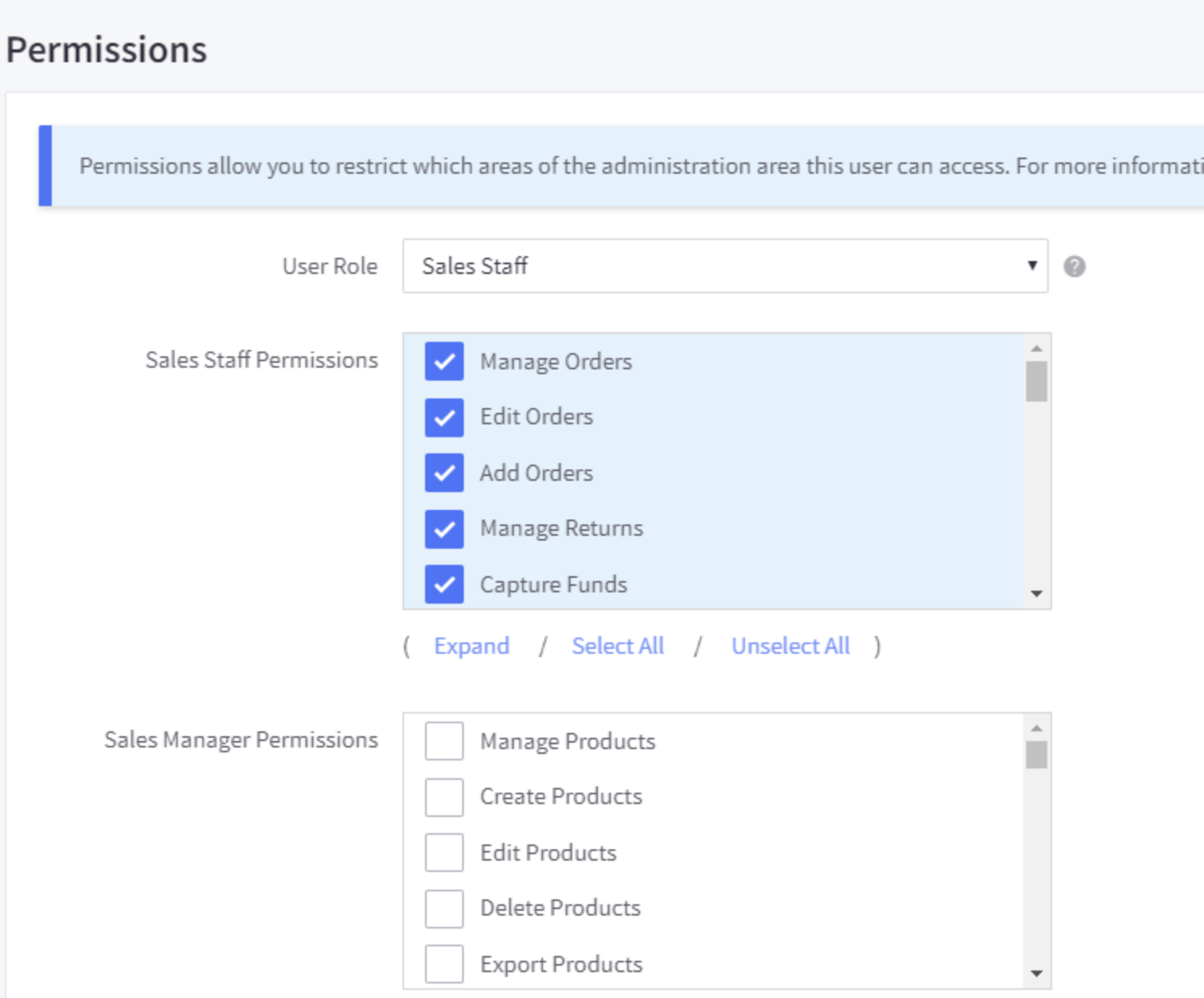
You’ll want to create user accounts immediately, especially if you’re collaborating with others to develop the shop. This allows users to access the store, and you can assign different permissions to each user.
Users contains a walkthrough for configuring your user accounts. We strongly advise that each user create their own account. Shared accounts can cause issues with email verification, a necessary security feature.
The email address used to build the store will be set to the store owner by default, a position that grants additional access to account information. We strongly advise that the store owner position be assigned to the person who is billed for the store. This prevents unauthorized users from altering the account’s settings.
Fill in Store Profile
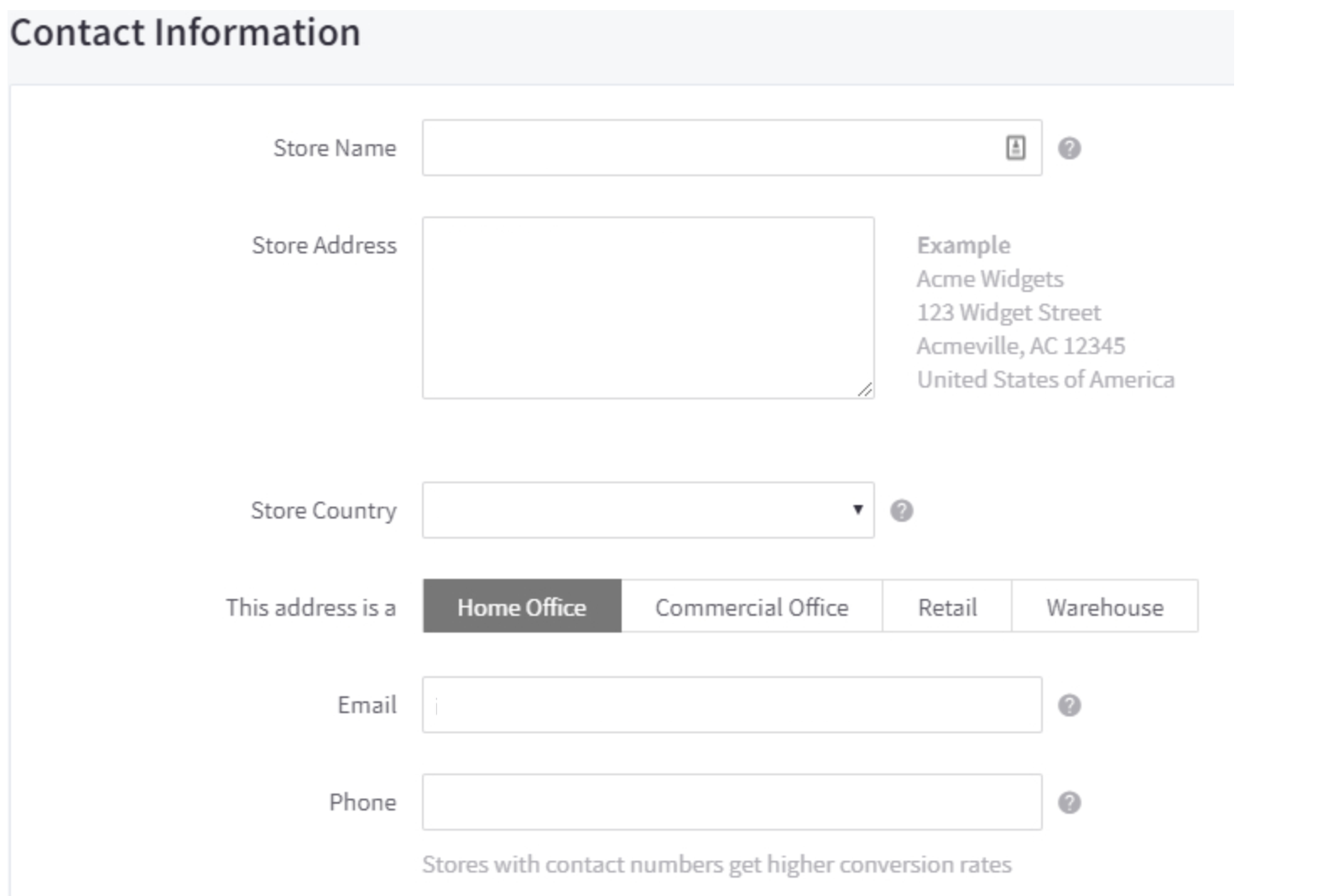
The store profile section is where you can enter basic store information such as the store’s name, country, and contact information. These settings have an impact on other store settings. For instance, the store country dictates the available payment gateways, and the store address appears on your invoices.
Add your products

Individual products can be added via Products then Add menu. See Adding Products for a walkthrough of this segment and how it all works.
- Click Add from either the product catalog or the side navigation
- Enter all of the information about your product, both required and recommended, for example, product name, categories, default price, weight, height/width/depth, and image If your product has variants (differing versions/SKUs of the same product) or modifiers (such as optional customizations or add-ons), you can add them as Variations and Customizations in the Product Options section.
Set up foundation
Although BigCommerce takes care of the checkout, delivery, and payment integrations, you’ll still need to determine how you want them to work.
- Currency: You can configure the currencies in which your shoppers can display prices using your currency settings. You may also enable shoppers to buy in currencies other than your store’s default transactional currency if you use a compatible payment gateway.
- Payment: BigCommerce has taken care of this step for you by automatically allowing PayPal powered by Braintree in qualifying storefronts; all you have to do is navigate to Store Setup then Payments and build or add your Braintree account.
- Shipping: To configure shipping, you must complete several settings in the Shipping Manager (found under Store Setup Shipping) to specify which customers see which prices and shipping service options. Additionally, we strongly suggest that you complete the product dimensions to ensure correct charges.
- Tax: it controls how tax is presented and paid on your storefront. Depending on your position and business requirements, you can either manually enter tax information or use an automated tax service.
- Checkout: By default, your store will use our Optimized One-Page Checkout, which was created with the aim of providing a streamline checkout experience. For further information, please read this article.
Set up your Storefront
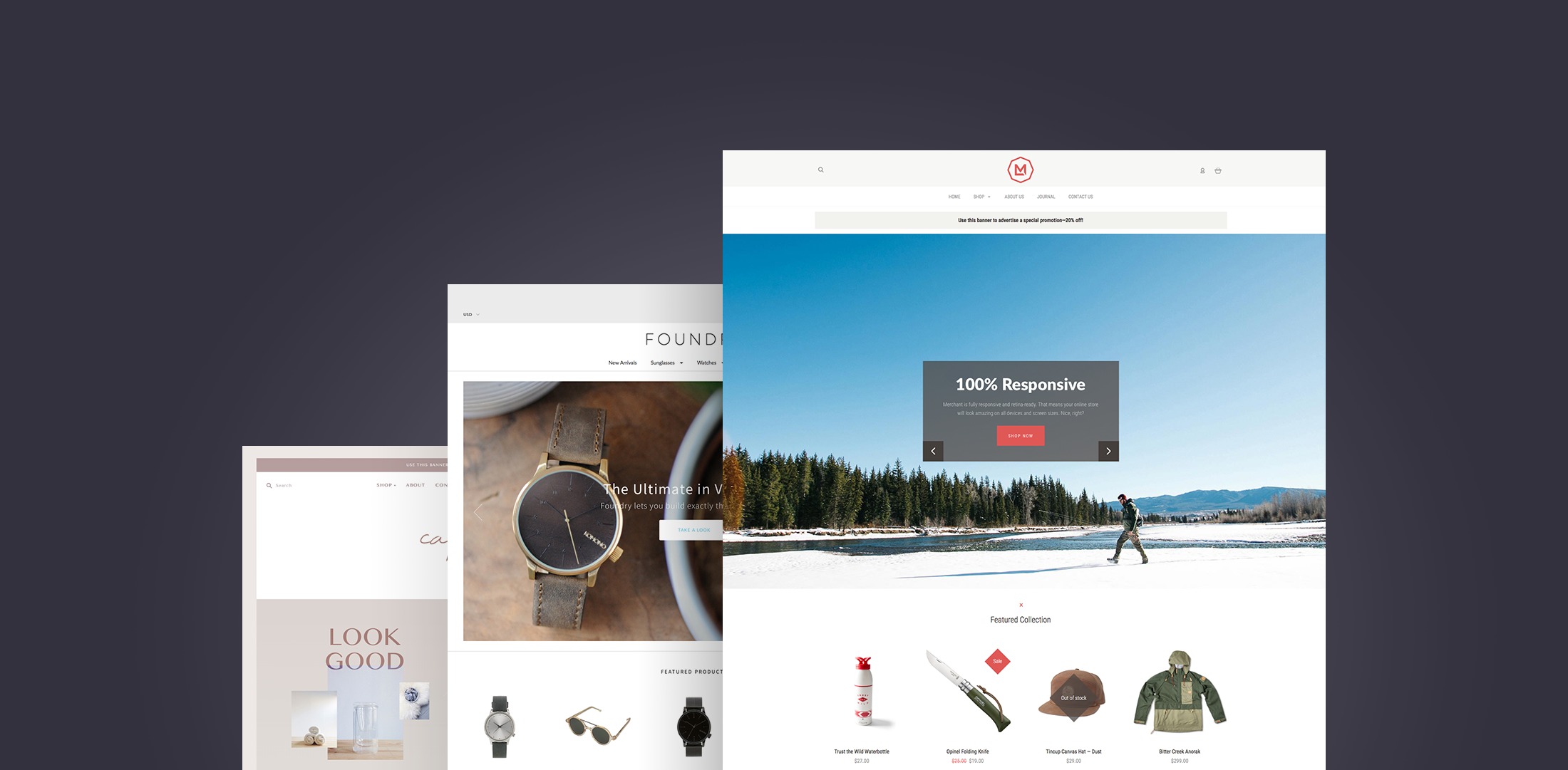
BigCommerce’s Theme Marketplace features a variety of professional themes suitable for a variety of industries. Filter by large pictures, grid layout, side category menu, catalog size, as well as price. Simple customizations are possible by launching Page Builder from the control panel, which enables you to easily add content to your storefront via widgets.
On the majority of storefront pages, text blocks, pictures, banners, videos, and buttons can be dragged and dropped into place and personalized without requiring any coding. You can preview the changes without releasing them, which enables you to work on your store’s design in the background while your store remains open.
BigCommerce also enables you to build web pages with a WYSIWYG editor or with an HTML editor if you choose to code. For more statistics, see Adding Web Pages.
Prepare order fulfillment
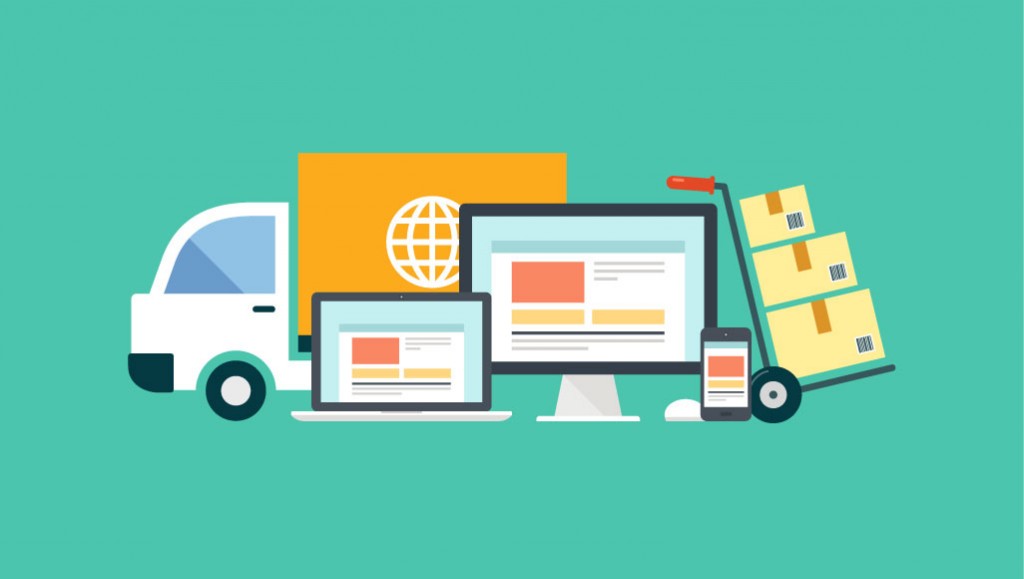
Once you’ve added and configured your items, it’s critical to develop an order fulfillment plan prior to opening your shop which includes order statuses, order updates, and product reviews.
- Order statuses: assist you in determining the next steps for a specific order. If you build your shipment via the native control panel, the order status will automatically update to Shipped or Completed. You can manually change and modify order status labels to best represent the order fulfillment processes of your company
- Order notifications: For aa throughout understanding, please visit the BigCommerce support blog about this.
- Product Reviews: enable visitors or consumers to provide input on your products and enable you to address any consumer questions or concerns. You may either use the control panel’s built-in comment system or a third-party app.
- Refunds and Returns: You may refund specific line items within the order, the entire order, or an order level refund for a specified amount. On the final stage, choose your preferred refund method from a list of available options based on the order’s original payment method.
Set up Technical Settings
After you’ve established your order fulfillment process, you can begin working on the more technical aspects of your shop, such as attaching a domain to your store, installing an SSL certificate, configuring email, and editing DNS records.
Officially launch your online store
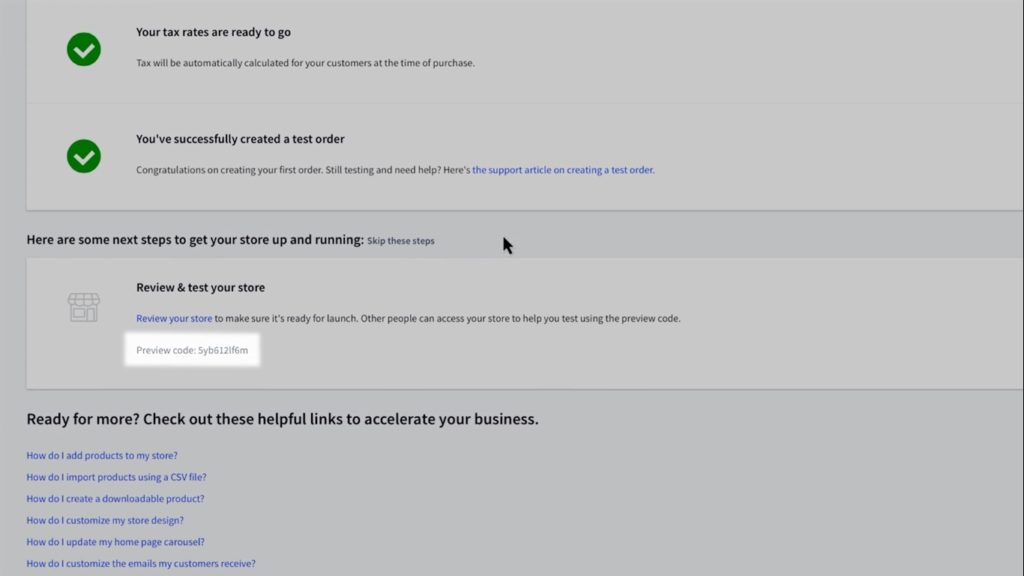
Prior to opening your shop, you can place a test order to ensure that the checkout process is functioning correctly and to gain useful insight into the storefront customer experience. This enables you to verify that your shipping and tax settings are configured and enabled properly, as well as that your payment gateways are accepting payments.
After your testing is complete and any necessary changes have been made, it’s time to open your store and show it to the world. With a single click in Store Settings, you can move your store from closed to open status, allowing customers to browse items and place orders.
Congratulations! After all the hard work, you finally have your own online store.
Examples of small BigCommerce businesses
Choosing the first website builder that appeals to you may or may not function. Certain businesses have specific requirements that are best met by one provider than another. Consider these three famous brands and what BigCommerce brought to the table that no one else might.
1. Bavarian Clockworks

Bavarian Clockworks operates in a niche market within a niche industry as a manufacturer of high-quality registered Black Forest cuckoo clocks. As such, gaining attention online had the potential to be a difficult task. Owner Robert Ellis preferred BigCommerce to ensure exposure without jeopardizing company objectives.
Robert chose BigCommerce for a variety of reasons, including the extensive app range and extensive customization options. He also lauded the company’s excellent customer service and scalability potential. While some other sites may have been able to handle the fundamentals, nothing came close to BigCommerce.
2. Kidstuff
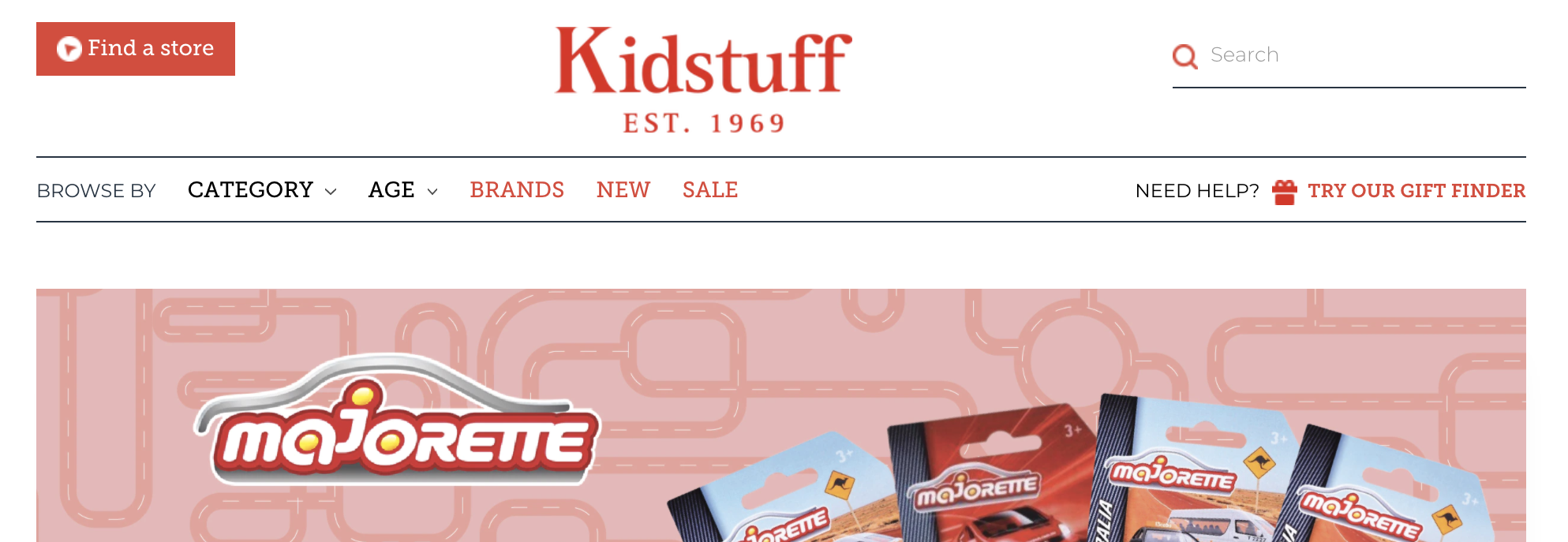
Kidstuff, an Australian toy manufacturer, has a long history in the field of children’s toys. However, the company’s recent revenue growth has left it unable to meet its current requirements. After reaching the limits of Magento, Kidstuff made the decision to migrate to BigCommerce.
BigCommerce was an easy choice due to its user-friendly capabilities, a caring customer service team, and a presence in the Australian market. Unlike smaller platforms that were unable to support rapid scaling or payment diversification, including the use of PayPal, BigCommerce was able to easily achieve online business targets without requiring a large investment in new IT infrastructure. Kidstuff saw a 73% growth in revenue year over year as a result of the move, as well as a significant increase in online sales.
3. Hincapie Sportswear

Hincapie Sportswear needed a forum that could address specific B2B requirements while still meeting B2C goals. BigCommerce was the ideal platform for bringing the nearly two-decade-old business into the modern era. Unlike the competition, BigCommerce was able to integrate with the company’s existing infrastructure, saving money and providing a more seamless experience.
BigCommerce was able to simplify the eCommerce store climate, enabling the business to thrive and develop. The results speak for themselves: Hincapie Sportswear increased lead generation by 123%, conversion rates by 67%, and sales by 19% after the site redesign was completed.
FAQs

1. Is my data safe and secure?
BigCommerce’s primary concern is the protection and availability of your shop. They safeguard your site and data with the same military-grade protection and encryption that the world’s largest banks do, and they maintain an average uptime of 99.99 percent.
2. Is it possible to use my own domain name?
Without a doubt. If you haven’t already, you can purchase a domain name from BigCommerce. If you already own a domain name, they’ll assist you in configuring it to work with your BigCommerce store.
3. Is it necessary for me to have my own SSL certificate?
Each plan includes a complimentary SSL certificate and site-wide HTTPs. BigCommerce suggests buying a premium SSL certificate for advanced SSL functionality. If you are a Pro or Enterprise user, you can also buy and configure a third-party SSL.
4. Will my BigCommerce subscription be subject to sales tax?
Sales tax on your subscription and other services or goods purchased from BigCommerce will be paid in accordance with applicable state laws and regulations.
5. Can I hire a manager for my store?
Customer Success Managers are only open to Enterprise customers on a premium basis. Their role is to act as a single point of contact for you and to ensure your continued success with BigCommerce. They will collaborate with you to identify critical issues and opportunities and will provide strategic and tactical advice on how to address them through the use of the robust functionality of the BigCommerce platform and selected partner technologies. Additionally, they will ensure that you have early access to betas, will listen to your suggestions, and will advocate for your needs within BigCommerce.
If you appreciate this level of service, we invite you to contact BigCommerce’s sales representative at 1-855-884-6731 for a customized quote that includes controlled services.
6. What does Express Routing entail?
Enterprise customers have access to Express Routing. When you contact our professional support team for technical assistance, your call will be prioritized. To learn more about other Enterprise-only programs, call 1-888-248-9325 to talk with a member of the BigCommerce team.
7. What is Priority Assistance?
Priority Support is only open to Enterprise customers who pay a fee. If a problem occurs, you will have special access to BigCommerce’s most senior technical support representatives and will be moved to the front of the support line. To learn more about other Enterprise-only programs, call 1-888-248-9325 to talk with a member of the BigCommerce team.
8. Are there any contracts that need to be signed?
No contract is required for the Standard and Plus plans, and you can cancel at any time. If you do, Bigcommerce will instantly cease billing you. On Pro, no contract is needed unless you have negotiated a special rate for higher volume or a lower average order value. Contracts for the BigCommerce Enterprise plan are available to ensure that they provide the quality of support that your company needs.
9. Are refunds available?
BigCommerce does not offer refunds, but they do offer a fully functioning 15-day free trial so you can determine if BigCommerce is a good fit for your company. BigCommerce is completely free to try.
10. Where do I check my twelve-months sales/orders?
From inside the BigCommerce Control Panel, you will be able to conveniently access your trailing twelve months of sales and orders. Select “Billing” and then “Purchase History.”
Conclusion
It is definitely a long way for anyone to start their own small business. However, after investing time into reading our work, we are hoping that you now have a better and clearer idea of how to build your business with the assistance of BigCommerce. Good luck with your work, and we are looking forward to seeing your online company prosper in the future.





